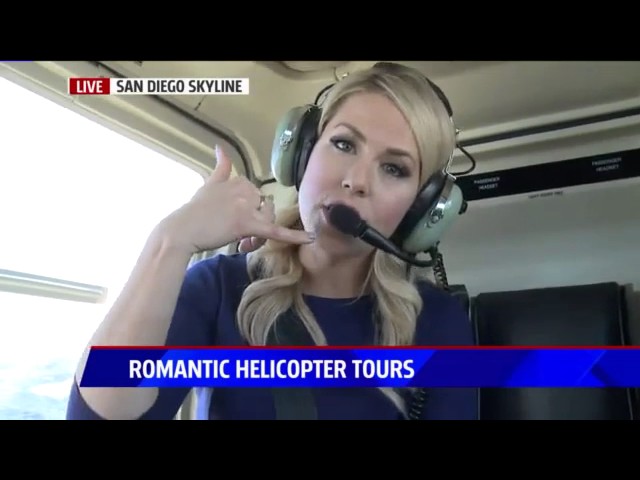The Dawn of the Pilot Experience in Mexico’s Skies
The skies of Mexico have long captivated the imaginations of those who look up, yearning for the freedom of flight. In recent times, these dreams have materialized through the burgeoning helicopter pilot experience that is accessible to enthusiasts from around the world. This new horizon of aviation not only invites seasoned pilots but also offers a once-in-a-lifetime opportunity for beginners to take control under the watchful eye of experienced instructors.
At the heart of this revolution in Mexican aviation is the introduction of comprehensive flight programs. From the shores of Cancun to the rugged landscapes of the Sierra Madre Mountains, there are courses tailored to all levels, with a focus on safety, technical knowledge, and hands-on piloting practice. Some of the best aviation schools in Latin America can be found in Mexico, each equipped with a fleet of helicopters ready to take to the skies.
Adventurous spirits are particularly drawn to the scenic flights offered over Mexico’s diverse terrain. Aspiring pilots can navigate through the misty heights of the Copper Canyon or hover above the crystal-clear waters of the Sea of Cortez. The varied climate and geography of the country provide an extraordinary backdrop for mastering the art of helicopter flying, making each lesson a memorable visual feast as well as a comprehensive educational experience.
In addition to the stunning vistas, the helicopter pilot experience in Mexico is enriched by highly qualified instructors, many of whom have international experience and multilingual capabilities. Their guidance is paramount, as they share insights not only on piloting but also on understanding the complex interplay between man, machine, and the environment. This holistic approach equips fledgling pilots with the skills needed to navigate the skies safely and confidently.
The rising popularity of helicopter tours and pilot programs has also led to an increase in related services such as photography flights, where enthusiasts can capture aerial images of Mexico’s majestic landscapes. These flights serve a dual purpose—training in maneuvering the helicopter for the perfect shot, while also exploring the artistic side of aviation. The integration of art, skill, and adventure is what makes the pilot experience in Mexico’s skies a truly unique and transformative journey.
Understanding the Helicopter Pilot Journey in Mexico
The path to becoming a helicopter pilot in Mexico is a challenging and fulfilling adventure, marked by rigorous training and comprehensive education. Aspiring aviators must first understand the basic prerequisites, which typically include a high school diploma and a proficiency in English, the international language of aviation. A medical certificate confirming good health and appropriate vision is also necessary before embarking on this career path.
Once the initial requirements are met, the next step involves selecting a reputable flight school certified by the Mexican Directorate General of Civil Aeronautics (DGAC). Training at an accredited institution ensures the curriculum meets safety and skill standards. Students undergo theoretical and practical instruction covering aerodynamics, navigation, meteorology, and critical flight operations. Hands-on flight experience is crucial, as it builds the practical skills necessary to maneuver helicopters in various conditions.
In addition to flight training, successful communication is paramount for safety in the skies. Hence, prospective pilots must achieve a certain level of proficiency in aviation-specific English. This includes learning necessary terminology and being able to communicate effectively with air traffic control, fellow pilots, and ground crew, especially in emergency situations or when operating in international airspace.
Following the completion of training and passing requisite exams, the final step toward becoming a helicopter pilot in Mexico is acquiring the appropriate licenses. This process entails a series of tests, both written and in-flight, administered by the DGAC. Once these are passed, the pilot receives their license, but the learning doesn’t stop there. Continuous education and recurrent training are part of a pilot’s journey to maintain skill levels and keep abreast of new regulations and advancements in aviation technology.
Navigating the Essentials: Helicopter Pilot Training in Mexico
Becoming a helicopter pilot in Mexico is a journey filled with excitement and rigorous training. Prospective pilots must embark on a comprehensive learning path that involves both theoretical knowledge and practical skills. The Mexican aviation authorities stipulate a series of prerequisites and training modules that must be satisfied to obtain a pilot’s license. This entails a deep understanding of aviation law, helicopter mechanics, and meteorology, among other core subjects. Safety is paramount in pilot training, ensuring all candidates are equipped to handle various flying conditions and emergency scenarios.
Flight schools in Mexico offer structured helicopter pilot training programs designed to take students from novices to qualified pilots. These programs are typically divided into two key parts: ground school and flight training. Ground school training is an immersive classroom experience where students learn the theories of helicopter flight, navigation, and flight planning. Qualifying examinations follow this theoretical component, testing the students’ grasp of essential knowledge areas before they can advance to hands-on flight training.
Practical flight training is where the thrill truly begins for aspiring pilots. Under the guidance of certified flight instructors, students get to take the controls of a helicopter in a controlled environment. This stage provides invaluable flight experience, starting with basic maneuvers and progressing to more complex operations as the training advances. To ensure comprehensive skill development, students practice a variety of flying techniques, from hovering to cross-country navigation, all under varying weather conditions to simulate real-world scenarios.
A unique aspect of helicopter pilot training in Mexico is the diverse topography and climate conditions the country offers. Trainees have the distinct advantage of flying over various landscapes, ranging from coastal regions to mountainous terrains. This geographical diversity not only enhances the training experience but also prepares pilots for the multitude of environments they may encounter in their future careers. With dedicated instructors and state-of-the-art technology, Mexican flight schools are committed to cultivating skilled pilots ready to take on the demands of helicopter aviation.
The Thrill of Helicopter Mastery: Mexican Pilot’s Perspective
Flying a helicopter is akin to orchestrating a symphony in the skies, where each control input must harmonize with the laws of aerodynamics to create a seamless flight experience. In Mexico, the landscape presents an exhilarating canvas for helicopter pilots, offering a unique combination of challenges and rewards. From the azure coastline of the Pacific to the rugged terrains of the Sierra Madre Mountains, Mexican pilots must adeptly navigate a diverse array of environments, each with its own set of weather patterns, altitudes, and visual landmarks.
The sense of accomplishment that comes with mastering the controls of a helicopter is particularly profound in Mexico, where pilots are often tasked with missions that push their skills to the limit. Whether it’s providing critical medical transportation across remote villages or offering a bird’s eye view of historic landmarks to awe-inspired tourists, every flight is more than just a journey; it’s an opportunity to demonstrate precision, control, and the sheer thrill of defying gravity. Mexican pilots often recount the intense focus required during operations, with no detail too small to ignore, from pre-flight checks to the final approach.
Skill mastery in helicopter aviation is not only about individual achievement but also about contributing to the larger community. In Mexico, helicopter pilots play a vital role in search and rescue operations, disaster relief efforts, and agricultural development, making their expertise not just desirable but essential. As they deftly maneuver their machines above lush jungles and ancient ruins, these aviators not only conquer the skies but also serve as guardians and facilitators of Mexico’s rich natural and cultural heritage.
Bridging Landscapes: The Role of Helicopter Pilots in Mexico’s Development
In the vast and varied topography of Mexico, helicopter pilots play a pivotal role in connecting remote and rugged areas with the more developed urban centers. These skilled aviators are critical in facilitating not just the movement of people, but also in the transport of goods, healthcare services, and in the execution of vital infrastructure projects. With obstacles like the Sierra Madre mountain range and dense forest areas, helicopters overcome geographical challenges that traditional ground transport simply cannot navigate efficiently.
The expertise of helicopter pilots in Mexico is particularly essential in times of natural disasters. When earthquakes, hurricanes, and floods strike, they are among the first responders, providing lifesaving airlifts and transporting emergency supplies to affected communities. The agility of helicopters allows these pilots to reach victims in areas that would otherwise be inaccessible, showcasing their importance not just in day-to-day connectivity but also in crisis management and humanitarian aid efforts.
Aside from emergency response, helicopter pilots also contribute significantly to economic development. In the oil and gas industry, for instance, helicopters are indispensable for offshore operations, ferrying workers to and from platforms in the Gulf of Mexico. Similarly, in tourism, helicopter tours offer visitors unparalleled views of Mexico’s breathtaking landscapes, including ancient ruins and natural wonders, adding a unique dimension to the country’s tourism offerings and supporting local economies.
Helicopter pilots in Mexico are also instrumental in the support of conservation efforts. By providing access to remote natural reserves, they enable scientists and conservationists to monitor and protect Mexico’s rich biodiversity. This aerial perspective is vital in combating deforestation, poaching, and illegal mining, ensuring that the country’s environmental treasures are preserved for future generations. Through their diverse contributions, these pilots are truly bridging landscapes and driving Mexico’s progress on multiple fronts.
Beyond the Flight: The Cultural Impact of Helicopter Pilots in Mexico
In the sprawling landscapes of Mexico, helicopter pilots have become symbols of prestige, innovation, and versatility, with their ability to navigate the diverse terrains from the bustling cities to the remote wilderness. Unlike traditional pilots, helicopter aviators in Mexico have a unique place in the cultural mosaic, as they are often involved in critical missions that range from executive transportation and touristic ventures to life-saving emergency responses and military operations. The rotorcraft’s agility and adaptability have made these pilots central figures in the narrative of modern Mexican transportation and rescue services.
The relentless dedication of helicopter pilots in Mexico is perhaps nowhere more evident than in their contributions to search and rescue missions following natural disasters. In a country where earthquakes, tropical storms, and volcanic eruptions are not uncommon, these skilled aviators are often first responders, risking their lives to locate survivors, deliver aid, and support recovery efforts. The image of a helicopter hovering above a disaster zone, with a pilot at the controls focused on the mission, has become an iconic representation of hope and humanitarian assistance within the Mexican collective consciousness.
Furthermore, the cultural impact of helicopter pilots extends to their role in the integration of remote communities into the national tapestry. By providing essential services such as medical airlifts and connecting far-flung villages with urban centers, these pilots facilitate social and economic development. Their presence in the skies not only symbolizes accessibility and progress but also the bridging of Mexico’s geographic and cultural divides. Through their work, helicopter pilots underscore Mexico’s commitment to ensuring that even the most isolated regions are not left behind in the nation’s journey towards a more interconnected and prosperous future.



